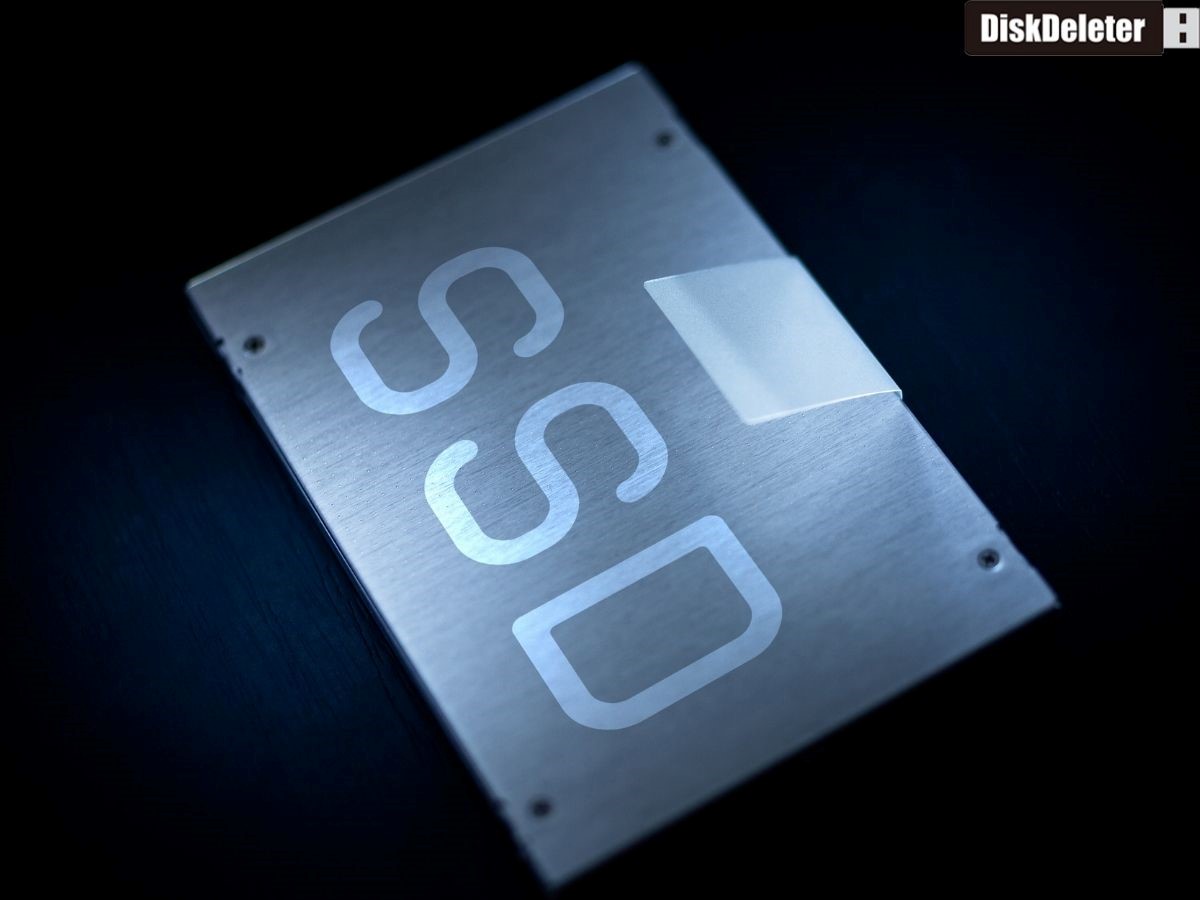
Jul 01, 2025
DiskDeleter
In the era of digital transformation, Solid State Drives (SSDs) have become the default storage medium for both personal and enterprise computing environments. With higher speed, better durability, and lower latency than traditional Hard Disk Drives (HDDs), SSDs have evolved rapidly—but so have the complexities associated with data security and secure erasure.

This article explores the different types of SSDs, their performance benchmarks, the challenges in data deletion, and why secure erasure is more critical than ever.
- SATA SSDs use SATA III (6 Gb/s) interface and has form factor of 2.5" or mSATA. This type of SSD can give 550 MB/s of throughput performance. Use case of this type of SSD is mainly for budget PCs and in legacy systems. Limitation of this type of SSD is it has slower interface which limits performance regardless of internal NAND speed.
- NVMe SSDs use PCIe interface and are available in M.2 or U.2 form factors. This type of SSD can deliver up to 7,000 MB/s of throughput performance. Use case of this type of SSD is for high-performance systems such as gaming PCs, content creation workstations, and enterprise applications. Limitation of this type of SSD is it requires compatible motherboard slots and may generate heat that needs proper thermal management.
- 2 SSDs are defined by their compact form factor and can support both SATA and NVMe interfaces. This type of SSD can deliver 550 MB/s performance with SATA and up to 7,000 MB/s with NVMe PCIe Gen4 interface. Use case of this type of SSD is mainly in mod ern laptops, ultrabooks, and desktops where space-saving and high speed are important. Limitation of this type of SSD is that not all M.2 slots support NVMe and may face thermal throttling in compact devices.
- 2 SSDs use the PCIe interface and come in 2.5" form factor with a U.2 connector. This type of SSD can give throughput performance between 3,000 to 4,000 MB/s. Use case of this type of SSD is mostly in data centers and enterprise servers where hot-swappable and high-capacity storage is needed. Limitation of this type of SSD is that it requires a U.2-compatible port or adapter and is less common in consumer systems.
- PCIe Add-in Card (AIC) SSDs use PCIe lanes and are installed directly into the motherboard’s PCIe expansion slots. This type of SSD can deliver over 10,000 MB/s of throughput performance in high-end configurations. Use case of this type of SSD is in workstations and servers requiring ultra-fast data transfer for AI, simulations, and large-scale processing tasks. Limitation of this type of SSD is that it occupies PCIe slots, needs active cooling, and is not suitable for compact systems.
SSD Data Deletion: Architecture-Driven Complexity Across SSD Types
Secure SSD erasure isn’t one-size-fits-all—each SSD type requires a tailored approach based on its internal architecture, controller access, and interface behavior. Below is a concise breakdown:
SATA SSDs
Use the AHCI protocol and support ATA Secure Erase. However, due to wear-leveling and remapped sectors, standard overwrites may miss hidden blocks unless firmware-level erasure is used.
Deletion time: ~10–12 minutes (1TB, 3-pass overwrite)
NVMe SSDs
Support faster, controller-level erase (e.g., NVMe Format NVM). Ideal for secure deletion, though some models restrict low-level access. Gen 4 drives show notably faster performance.
Deletion time: ~2–6 minutes (1TB, depending on Gen 3 or 4)
M.2 SSDs
Form factor only—deletion depends on whether it’s SATA (slower) or NVMe (faster). M.2 NVMe can overheat under sustained write, impacting speed.
Deletion time: Matches interface type (see above)
U.2 SSDs
Enterprise-grade, with strong erase support (e.g., Secure Erase, Sanitize). Often integrated into RAID systems, requiring software with physical mapping access.
Deletion time: ~12–15 minutes (1TB, multi-pass)
Add-in Card SSDs
High-performance PCIe-based drives. Support deep firmware access and rapid erasure if tools align with the controller.
Deletion time: ~3–5 minutes (1TB, depending on write path optimization)
How to Choose the Best SSD for Home & Business Use
Choosing the right SSD depends on use case, workload, and durability expectations—not just capacity or price.
???? Home Use
- Go for: M.2 NVMe Gen 3 SSDs – fast, reliable, and cost-efficient for gaming, editing, or multitasking.
- Budget Option: SATA 2.5" SSDs – still great for upgrading from HDDs in older machines.
- Trend Insight: In 2024, 60%+ of home users opted for Gen 3 NVMe SSDs for their balance of speed and affordability.
Business & Enterprise Use
- Best fit: NVMe Gen 4 or U.2 SSDs with enterprise-grade endurance and secure erase support.
- Ideal for: Workstations, servers, databases, and virtual environments needing sustained speed and security.
- Adoption Stat: NVMe Gen 4 use in businesses rose 42% YoY (IDC, 2024) due to compliance and high IOPS demand.
Logical Summary – What to Choose and When
- For basic home upgrades → SATA SSDs (2.5")
- For high-speed home performance → M.2 NVMe Gen 3/4
- For small business desktops → NVMe Gen 3 (balance of speed and cost)
- For enterprise workloads → U.2 or Gen 4 NVMe SSDs (secure erase + durability)
Always verify that the SSD firmware supports secure overwrite or sanitize functions if erasure is part of your lifecycle process.
Conclusion: Why DiskDeleter Is the Right Choice
As enterprises face increasing compliance demands (GDPR, HIPAA, ISO 27001), a mere format or factory reset is no longer sufficient. You need a forensically secure, tamper-proof, and certified deletion solution — one that adapts to evolving SSD technologies.
Disk Deleter provides:
- 16+ industry-standard deletion algorithms
- Support for SATA, NVMe, U.2, and PCIe SSDs
- Tamper-proof certificates
- Lifetime license with unlimited SSD/HDD usage
- Detailed asset management and reporting tools
With DiskDeleter, data deletion becomes not just a task — but a trusted process.
Powerful, permanent, and provable. That’s DiskDeleter.
© 2025 Jungle KK - Powered By Knowledge Fortune
